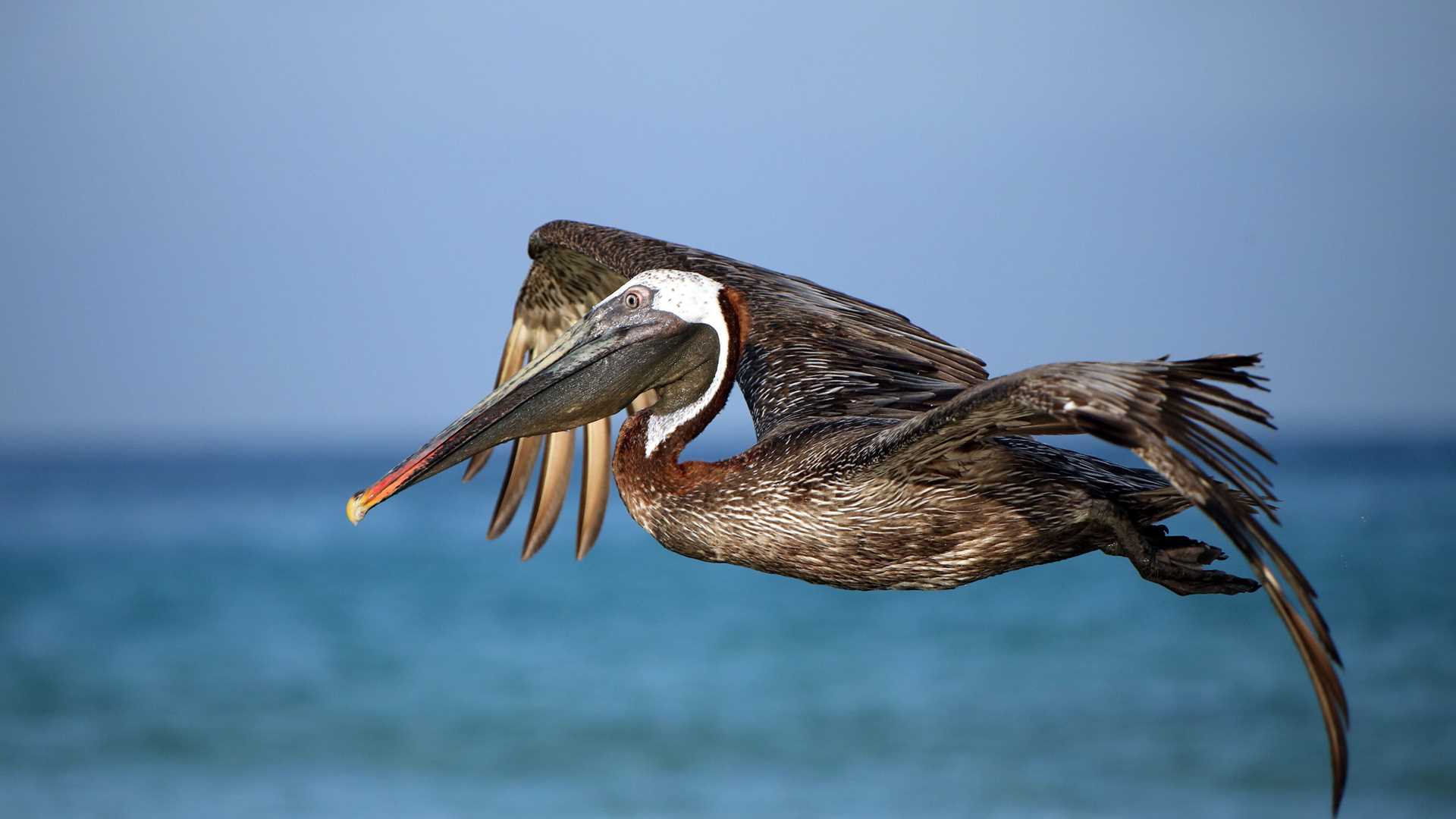Located in the easternmost part of the archipelago, Punta Pitt was the first site visited by Charles Darwin in 1835. It is the closest point to South America, and it is home to a wide variety of seabirds. Unlike anywhere else in the Galapagos, three species of boobies nest in Punta Pitt: Nazca boobies, blue-footed boobies, and red-footed boobies.
Early in the morning, National Geographic Islander II arrived at Punta Pitt on San Cristobal. A soft breeze caressed the atmosphere. In the east, the imposing sun was shining, and in the air, juvenile red-footed boobies flew over us. We anchored right in front of majestic tuff cones in the protected cove known as Punta Pitt. After breakfast, we boarded Zodiacs and headed towards the greenish landing beach. We immediately hiked the steep trail in search of endemic species like the San Cristobal lava lizard or the San Cristobal mockingbird. We were pleasantly surprised to find many finches fluttering along the bushes, indicating that the rainy season will soon arrive. As we continued, a San Cristobal mockingbird came very close to explore our surroundings. We spotted some magnificent frigatebirds scouting for any potential catch–frigates are known to steal food from booby nests or harass them in the air. At the end of our trail, we found several red-footed boobies nesting on bushes and Muyuyu trees. This is the only species of the three boobies in the Galapagos that nest on trees. After the hike, we returned to our landing beach and suited up for some great snorkeling and swimming. We had a couple sea lions and a large variety of fish as companions. We had an incredible time in the water.
After lunch, we disembarked for an outing at Cerro Brujo. Along the coast, we explored tide pools and observed Galapagos sea lions and brown pelicans. We learned about the stunning geology of this area with its turquoise water and black lava fields. To end our day, we navigated to Kicker Rock with glasses of wine in hand on the sun deck. The gigantic rock looked insurmountable. Old lava flows showed us the explosive geologic past of the islands. The sun disappeared from the horizon, and seabirds returned to their nests after a long but beautiful day in this paradise called Galapagos.







